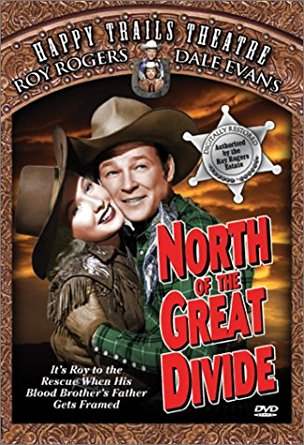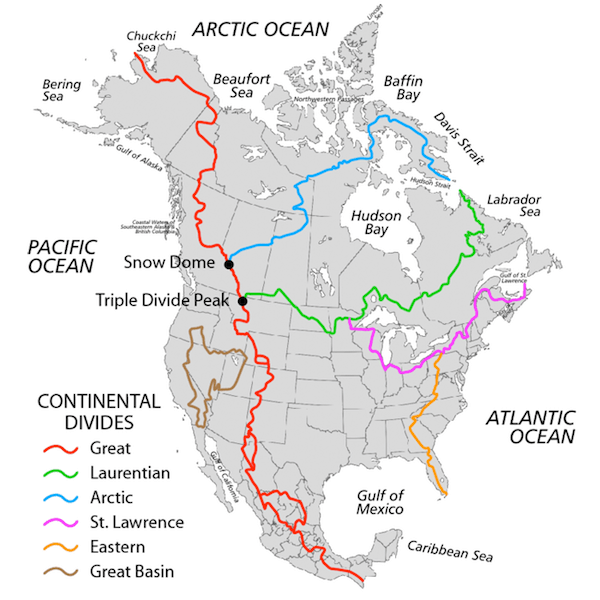Well-plotted Roy Rogers’ flick is friendly to Indians and the environment to boot
Reviewed by Brian R. Wright
 Summary: Annual run of the salmon gives Indians of the Northwest their livelihood. This way of life is threatened by canneries on both US and Canadian sides. The owner of the cannery on the US side is a d**k who has his henchman do dirty deeds, and who will overfish the river, which along with the Canadian cannery will starve out the Indians in the near term. Roy Rogers is an Indian Agent of the federal interior department, and good friends with the Indian leaders and helps to stave off trouble and, yes, save the day, with his quick and agile horse Trigger… and his dog who does a lot of running and faithful, enthusiastic work, but is uncredited. [I believe the dog’s name is Bullet.]
Summary: Annual run of the salmon gives Indians of the Northwest their livelihood. This way of life is threatened by canneries on both US and Canadian sides. The owner of the cannery on the US side is a d**k who has his henchman do dirty deeds, and who will overfish the river, which along with the Canadian cannery will starve out the Indians in the near term. Roy Rogers is an Indian Agent of the federal interior department, and good friends with the Indian leaders and helps to stave off trouble and, yes, save the day, with his quick and agile horse Trigger… and his dog who does a lot of running and faithful, enthusiastic work, but is uncredited. [I believe the dog’s name is Bullet.]
I thought I’d give a nod to Mr. Rogers for his work, especially after seeing a film he made toward the beginning of his screen career, 1940, at the age of 29: Colorado. Which was quite good. He basically became a star, “The King of the Cowboys,” during that decade, in the Gene Autry mold… meaning a singing cowboy. Then Roy went on to TV, in the Roy Rogers Show (1951-1957), with his real-life wife, Dale Evans. This is when I was a boy (born 1949), and, as many of my peers of the first TV generation, considered him right up there in the pantheon of childhood heroes. He was also one of the top 10 breadwinners in the Western genre in his day. The Wikipedia article on him lays out the facts that his screen persona and his real persona were virtually the same.
For those wondering why he “didn’t serve” in The Bad War, you may consult this decently written piece in Music Weird.
North of the Great Divide, has only two reviews, and the first one is excellent: go to this IMDb page here, and this reviewer, Brian Camp from Bronx, NY, who has about 720 reviews altogether, awesome dude. I agree with virtually every point he makes and his knowledge of Rogers’ work is amazing.
So that takes care of the review per se. I just want to make a few cultural and moviemaking comments:
 For one thing, the title kind of throws me. When I think of the main Continental Divide, I think of the one that runs north to south from Alaska down through Mexico. A ‘divide’ for me is where on one side of the mountains’ watershed is toward the Pacific Ocean (West) and the other side heads toward the Atlantic Ocean (East). So how do you get NORTH of that? Check the link for the map on the right if you want to noodle this out yourself.
For one thing, the title kind of throws me. When I think of the main Continental Divide, I think of the one that runs north to south from Alaska down through Mexico. A ‘divide’ for me is where on one side of the mountains’ watershed is toward the Pacific Ocean (West) and the other side heads toward the Atlantic Ocean (East). So how do you get NORTH of that? Check the link for the map on the right if you want to noodle this out yourself.- Another point of geographical license, we’re told that canneries are built on two sides of a river, where the south side is on the United States side and presumably the north side is on the Canadian side. Most salmon species live their lives in salt water, which in the movie would be the Pacific Ocean, but if you look at a map there is no river in the Northwest that goes east to west to the ocean along the US-Canadian border. [For the one species of salmon that stay in fresh water rivers, then go upstream, you could have an inland river that crosses the US-Canada border north to south, such that the Canadian cannery would be kitty corner to the US cannery, but that’s about it—and the Canadian Mounties play a big role in the movie so they’re not miles away or anything.]
- As the reviewer, Brian Camp, makes clear, North of the Great Divide actually deals with a serious environmental issue of how to preserve the rights of native peoples to natural sustenance, while balancing the commercial needs of the industrial societies and private property? In the context of the story, protagonist Roy’s solution is a reasonable one: to prevent death of the resource and denial of the ‘free’ resource to native peoples by setting common sense limits via government. Okay, yes, this assumes the existence of a resource, like a river, that is ‘public.’ Anyway, Roy Rogers makes the reasonable proposal.
- The Roy Rogers movies I’ve seen are highly respectful of American Indians and their plight. He’s quite the naturalist, too. Any villainous behavior comes about from whites gone bad, which provides a refreshingly clear black-and-white moral framework where the hero can work his will. Further, the plot has some twists and turns, it’s not always obvious that the bad guys are bad until you unravel the threads a bit. Contrast having a role model like Roy Rogers while a boy is growing up with such inspiring real figures as the Teenage Ninja Mutant Turtles!
- You know that they’re not using any special effects to speak of. So when you see men riding on horseback all out, that’s really happening! Much of the time with the actors in the saddles, at least in close ups. Yes, it’s kind of humorous to watch all this lickety-split horse riding over hill and dale, and then when Roy and the fellow riders or his lady friend are more relaxed on their steeds, they may break out into song. Straight from the sound studio with lip synching. Hey, we were easily entertained as children… which is undoubtedly the major audience… and sure sold plenty of soap, or whatever else Madison Avenue set up the kids for. Still there was an essential American innocence in these films, clear cut and family friendly and kind to other sentient creatures.
Consider that IMDb gives North of the Great Divide a 6.9 rating! Reviewer Camp suggests that it’s one of Rogers’ best for its social message, but not as outstanding as The Golden Stallion (1949), which he (Camp) considers a masterpiece. Definitely, such singing cowboy movies, especially with Roy Rogers, are worth a segment or even a day on Turner Classic Movies. You have to give a lot of credit to the man and to the actor/singer/laborer—read the bio, he surely paid his dues more than most.
[I remember as I was growing up in Overland Park, how as we boys got into our teenage years, we started disrespecting the shows we watched as children as ‘corny’ and ‘old-fashioned.’ If I only knew then what I know now, I’d have held out for decades ’til the day I drop dead for ol’ Roy and Trigger and Bullet and Dale and the rest, nice beings worthy of every bit of emulation and sensitivity a teen can muster.]
This post has been read 1128 times!

